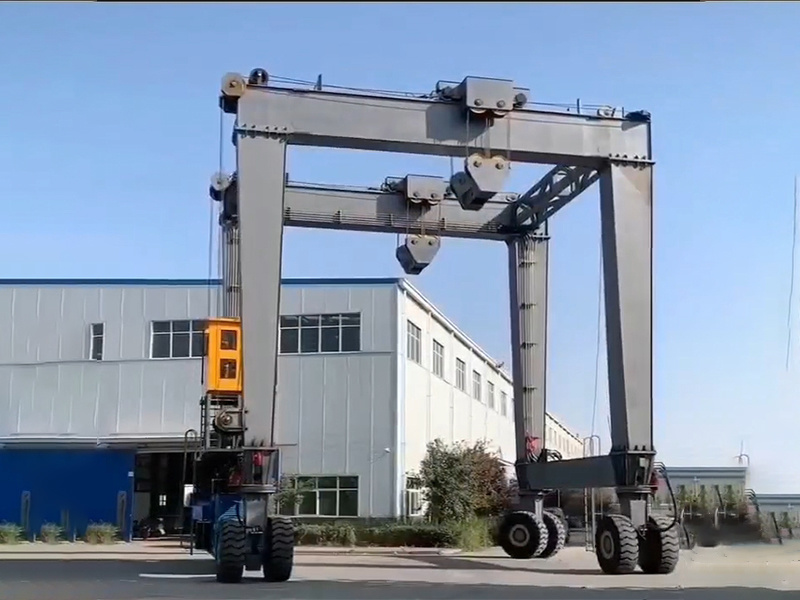Henan Aifite Intelligent Equipment Co., LTD.
Products
Crane Lifting Beam
Classification:
Product Introduction
**Crane Lifting Beam**
In the world of heavy lifting and construction, the crane lifting beam plays a pivotal role in ensuring safety, efficiency, and precision. This essential piece of equipment is designed to facilitate the lifting and transportation of heavy loads, making it indispensable in various industries, including construction, manufacturing, and shipping. This article delves into the various aspects of crane lifting beams, including their design, applications, advantages, and safety considerations.
**Understanding Crane Lifting Beams**
A crane lifting beam, often referred to as a spreader beam, is a horizontal structure that is used in conjunction with a crane to lift heavy objects. It serves to distribute the weight of the load evenly across multiple lifting points, reducing stress on the crane and the load itself. Typically made from high-strength steel or aluminum, lifting beams come in various sizes and configurations to accommodate different lifting requirements.
The basic design of a crane lifting beam consists of a central beam with attachment points for slings or hooks at either end. The beam can be adjustable, allowing for flexibility in load dimensions, or fixed for specific lifting tasks. The use of lifting beams helps to stabilize the load, preventing it from swaying or tipping during transportation.
Technical Specification:
| Product name | Crane lifting beam |
| Load capacity | 1-100 tons |
| Size | customized |
| Colour | customized |
| Material | Alloy Steel |
**Applications of Crane Lifting Beams**
Crane lifting beams are utilized across a wide range of industries. In construction, they are essential for lifting large structural components such as steel beams, concrete panels, and pre-fabricated elements. By distributing the weight evenly, lifting beams ensure that these components can be safely maneuvered into place.
In manufacturing, lifting beams are used to handle heavy machinery and equipment during installation or maintenance. They provide the necessary support to lift and position these items without risk of damage or injury.
The shipping industry also benefits from crane lifting beams, as they are used to load and unload containers from cargo ships. The ability to lift multiple containers at once not only improves efficiency but also minimizes the time vessels spend in port.
**Advantages of Using Crane Lifting Beams**
One of the primary advantages of using crane lifting beams is the enhanced safety they provide. By distributing the load evenly, lifting beams reduce the risk of equipment failure and accidents associated with improper lifting techniques. This is particularly important in environments where heavy loads are routinely handled.
Additionally, crane lifting beams improve operational efficiency. They allow for the simultaneous lifting of multiple loads, reducing the number of trips required by the crane. This not only saves time but also decreases labor costs and increases productivity.
Lifting beams also offer versatility. They can be customized to suit specific lifting needs, whether that involves adjusting the length of the beam or adding specialized attachments for unique loads. This adaptability makes them suitable for a wide range of applications.
**Safety Considerations When Using Crane Lifting Beams**
While crane lifting beams enhance safety, it is crucial to follow proper safety protocols when using them. First and foremost, operators must be trained in the correct usage of lifting equipment. This includes understanding the load capacity of the lifting beam and ensuring that it is not exceeded.
Regular inspections of the lifting beam are also essential. Operators should check for signs of wear and tear, such as cracks or deformities, before each use. Any damaged equipment should be taken out of service immediately and repaired or replaced as necessary.
Proper rigging techniques are critical when attaching loads to the lifting beam. The use of high-quality slings and hooks, along with correct knotting and securing methods, can significantly reduce the risk of accidents. Additionally, operators should always maintain clear communication with the crane operator to ensure coordinated movements during lifting.
Lastly, it is important to consider environmental factors. Wind, rain, and uneven ground can all affect the safety and stability of lifting operations. Operators should be vigilant and postpone lifting activities if conditions are deemed unsafe.
**Conclusion**
Crane lifting beams are a vital component in the heavy lifting and construction industries. Their ability to distribute weight evenly enhances safety, increases efficiency, and allows for versatile applications across various sectors. However, it is essential to adhere to safety protocols and regularly inspect equipment to ensure safe operation.
As technology advances, the design and functionality of crane lifting beams continue to evolve. Innovations such as lightweight materials and integrated safety features are being developed to further enhance their effectiveness. As industries continue to grow and change, crane lifting beams will undoubtedly remain an integral part of safe and efficient lifting operations.
Keyword:
Feedback
Leave a message online and get the product quotation free of charge. We will arrange the specialist to contact you as soon as possible.







